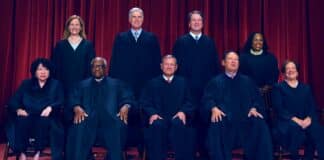The Second Amendment to the United States Constitution is a widely debated and often misunderstood part of the Bill of Rights. This amendment, which was ratified in 1791, has been the subject of much controversy and legal interpretation over the years.
A Brief History of the Second Amendment
The Second Amendment was adopted as part of the Bill of Rights, which is a collection of the first ten amendments to the United States Constitution. James Madison proposed these amendments in 1789, intending to protect individual liberties and limit the power of the federal government. The Second Amendment reads as follows:
“A well regulated Militia, being necessary to the security of a free State, the right of the people to keep and bear Arms, shall not be infringed.”
The Founding Fathers and the Second Amendment
To better understand the Second Amendment, it is essential to consider the historical context in which it was written. The Founding Fathers were deeply concerned about the potential for tyranny and oppression by a centralized government. They had just fought a war against the British monarchy, which had attempted to disarm the American colonists and suppress their rebellion.
In drafting the Second Amendment, the Founding Fathers sought to ensure that the new American government would not have the power to disarm its citizens and leave them defenseless against tyranny. They believed that an armed citizenry would serve as a check against government overreach and help to maintain the balance of power between the government and the people.
Interpreting the Second Amendment
The interpretation of the Second Amendment has evolved, with various Supreme Court decisions shaping the legal understanding of the amendment. Two landmark cases, United States v. Miller (1939) and District of Columbia v. Heller (2008), have had a significant impact on the interpretation of the Second Amendment.
United States v. Miller (1939)
In United States v. Miller, the Supreme Court ruled that the Second Amendment does not protect an individual’s right to own a sawed-off shotgun, as it was not a weapon typically used by militias. The Court held that the Second Amendment’s primary purpose was to protect the right to bear arms in the context of a well-regulated militia, rather than an individual’s right to own any type of firearm.
District of Columbia v. Heller (2008)
In a landmark decision, the Supreme Court ruled in District of Columbia v. Heller that the Second Amendment does protect an individual’s right to own firearms for self-defense and other lawful purposes. This decision marked a significant shift in the interpretation of the Second Amendment, as it recognized an individual’s right to bear arms separate from the context of a militia.
However, the Court also noted that the right to bear arms is not unlimited and that certain restrictions on firearm ownership and use are permissible. For example, the Court acknowledged that laws prohibiting the possession of firearms by felons and the mentally ill, or restricting firearms in sensitive places such as schools and government buildings, are consistent with the Second Amendment.
The Ongoing Debate Surrounding the Second Amendment
The debate over the Second Amendment continues to be a contentious issue in American politics. Advocates for gun control argue that stricter regulations on firearm ownership and use are necessary to reduce gun violence and protect public safety. They contend that the Second Amendment does not guarantee an unlimited right to bear arms and that reasonable restrictions are consistent with the amendment’s original intent.
On the other hand, gun rights advocates argue that the Second Amendment guarantees an individual’s right to own and carry firearms for self-defense and other lawful purposes. They believe that any restrictions on this right infringe upon the constitutional rights of law-abiding citizens and are ineffective in preventing gun violence.
Works Cited
– “Bill of Rights.” National Archives, https://www.archives.gov/founding-docs/bill-of-rights.
– “District of Columbia v. Heller.” Oyez, https://www.oyez.org/cases/2007/07-290.
– “United States v. Miller.” Oyez, https://www.oyez.org/cases/1900-1940/307us174.
– Winkler, Adam. “The Secret History of Guns.” The Atlantic, September 2011, https://www.theatlantic.com/magazine/archive/2011/09/the-secret-history-of-guns/308608/.





